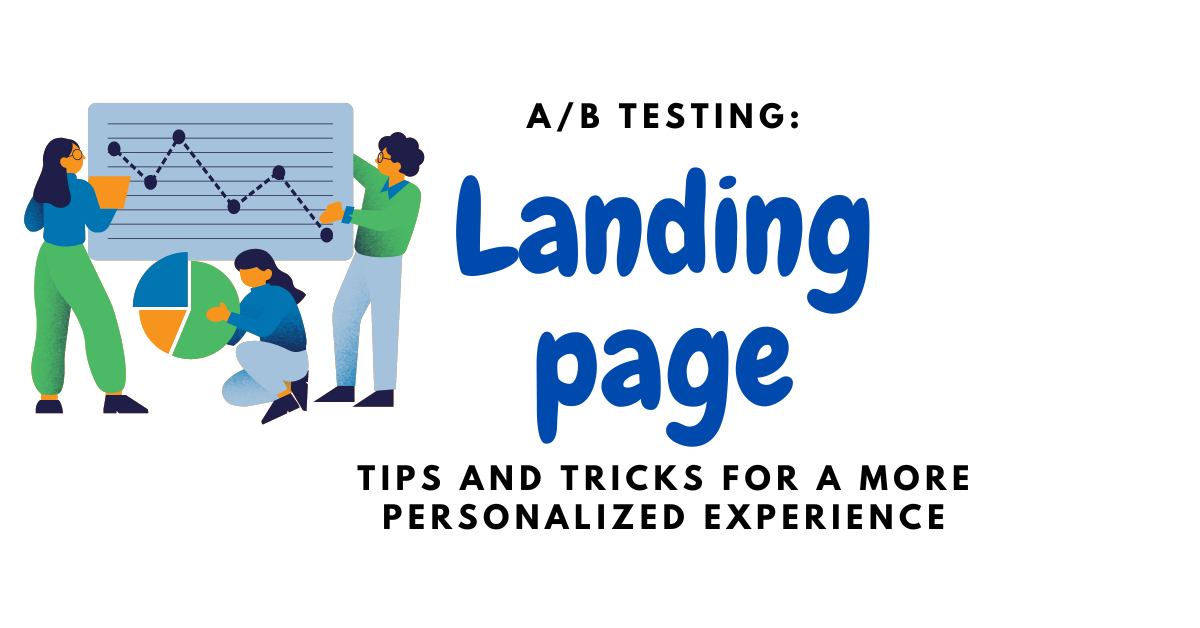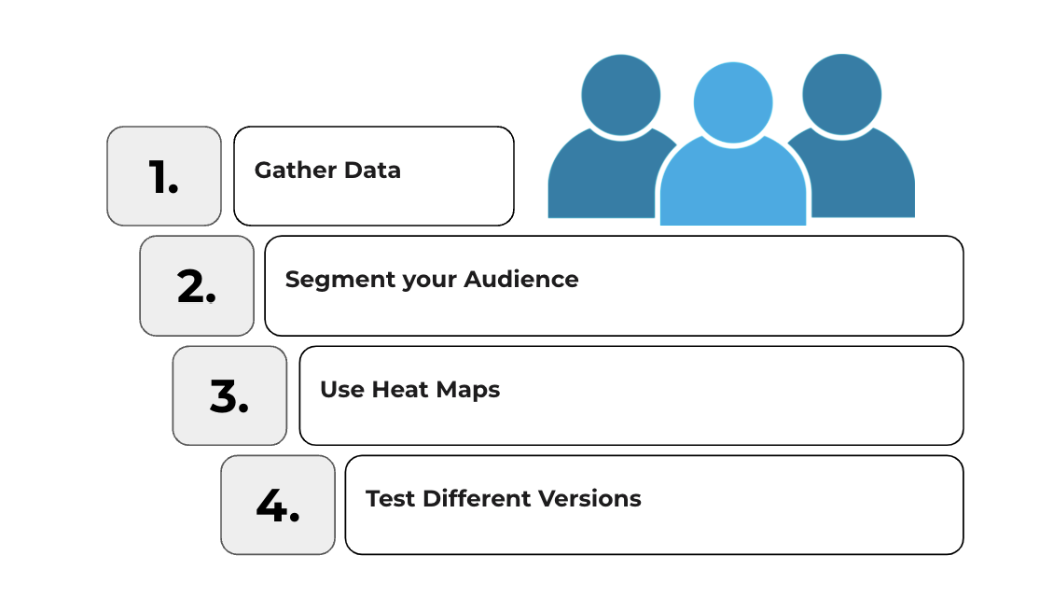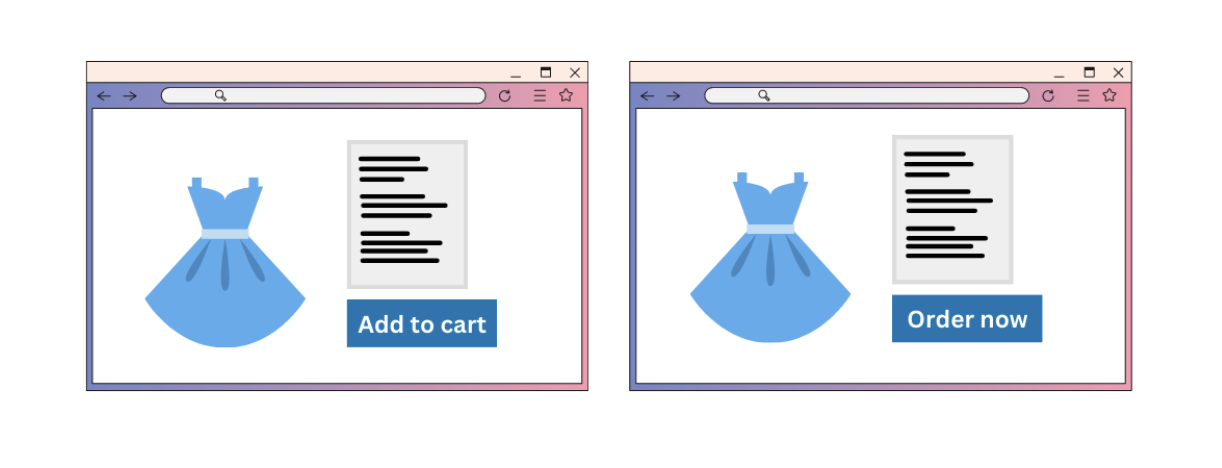A/B Testing your Landing Pages: Tips and Tricks for a More Personalized Experience
2-5-2023 eCommerce Tips & TricksIf you’re an e-commerce business owner, you know how important it’s to drive traffic to your website and convert those visitors into customers. To increase your chances of selling more, you can try A/B on your landing page. A/B testing is an effective way to optimize your landing page and see which one has the best performance. When the A/B test is done the right way you can make data-driven decisions to improve your conversion rates.
In this blog post, we’ll share tips and tricks for A/B testing your landing pages to create a more personalized experience for your audience. By using these strategies, you’ll be able to optimize your landing pages for higher conversions and increased sales. So, let’s dive in and explore the world of A/B testing.

How to do A/B landing page testing?
As we said, A/B testing allows you to compare two versions of your landing page to see which one performs better depending on user behavior. With A/B testing you can optimize your landing pages to increase conversions, drive more leads, and ultimately, grow your business. However, today is important to understand your target audience and give them a positive experience. So, in the next part of the blog post, we’ll give you some tips on how you can A/B test your landing pages while having in mind how the personalized audience experience.
Understanding Your Audience for Effective A/B Testing
Understanding your audience is important for creating successful tests that will give you better results when A/B testing your landing pages. By gathering data on your target audience’s demographics, interests, and behaviors, you gain valuable insights into what motivates them and what they’re looking for when they visit your website. With this information, you can create more targeted landing pages that speak to your audience’s needs and interests.
To better identify your target audience and optimize your A/B testing, you should:
- Gather Data: The first step in knowing your audience is to collect information about their demographics, interests, and activity. You can do this through surveys, customer feedback, and website analytics tools such as Google Analytics.
- Segment your Audience: After you’ve gathered information about your target audience, break them into groups based on their interests and behavior. This will help you create more targeted landing pages that speak directly to their needs and interests.
- Use Heat Maps: Heat maps are an excellent tool for determining how visitors interact with your landing pages. They show you which parts of the page users are clicking on, scrolling through, or ignoring. By analyzing this data, you can identify areas for improvement and make data-driven decisions about A/B testing.
- Test Different Versions: Finally, don’t be afraid to test different versions of your landing pages based on your audience’s interest and behavior. For example, if you have a segment of customers who are interested in a particular product, you can create a landing page that showcases that product and see how it performs compared to your original landing page.

Personalizing Your Landing Page for Better Customer Experience
After you get a better understanding of your customers you can personalize your landing page. Overall, using personalized content on your landing pages is an excellent method to improve their effectiveness and conversion rates. In that way, you create a more tailored experience that speaks directly to the customer’s needs and interests.
If you like to try personalizing your landing page, you can try the next steps.
- Use Dynamic Content: Dynamic content allows you to display different content to different users based on their interests or behavior. You can use dynamic content to show related products on your landing page to the customer that already shown interest in a specific product.
- Personalized Messaging: By using data on your audience’s interests and behavior, you can create landing page messaging that speaks directly to them.
- Personalized Recommendations: Similar to the first point, you can use data on your audience’s behavior to make personalized product recommendations. By showing products that are relevant to the customer’s interests and previous purchases, you can increase the likelihood of conversion.
A/B Testing Strategies for Optimizing Goals, CTA, and Design
Clear goals, a strong CTA, and a simple design are interconnected and depend on each other to create an effective user experience. To begin, creating specific goals is critical since it helps you define what you want to accomplish with your landing page. Without clear goals, you won’t know what you’re testing for or what you want your customers to do. Your goals must be specific, measurable, and aligned with your overall business objectives.
Next, a strong call to action (CTA) is essential for guiding customers toward your desired action. Your CTA should be prominent, clear, and aligned with your goals. Also, it should be designed to stand out on the page and draw customers’ attention toward the action you want them to take.
Finally, keeping your landing page design simple is important for creating a seamless user experience. Your landing page needs to be easy to navigate, with a clear hierarchy of information that guides customers toward your CTA. A cluttered or confusing design can be overwhelming for customers and may discourage them from taking the desired action.

Analyzing Your A/B Testing Results for Ongoing Improvement
Finally, analyzing the outcomes of your A/B testing is crucial to the ongoing success of your landing page optimization efforts. Without analyzing your results, you won’t know what’s working and what’s not. To get the most out of your A/B testing, it’s important to test one variable at a time. This means changing only one element of your landing page – such as the headline, CTA, or image – and leaving everything else the same. This allows you to isolate the effects of each variable and accurately measure its impact on your conversion rates.
Once you’ve run your A/B tests and gathered your results, it’s time to analyze them. Look for the patterns and trends in your data, and identify which versions of your landing page performed better. Some key metrics to consider when analyzing your A/B testing include conversion rates, bounce rates, and engagement metrics like time on page.
Summing up
To sum up, A/B testing your landing pages is a fantastic way to boost conversion rates and provide an improved user experience for customers. The ultimate purpose of A/B testing is to constantly improve your landing page in order to generate better results. By following the best practices, you can build successful and efficient A/B tests that will help you understand your audience and optimize your landing page for better results.
